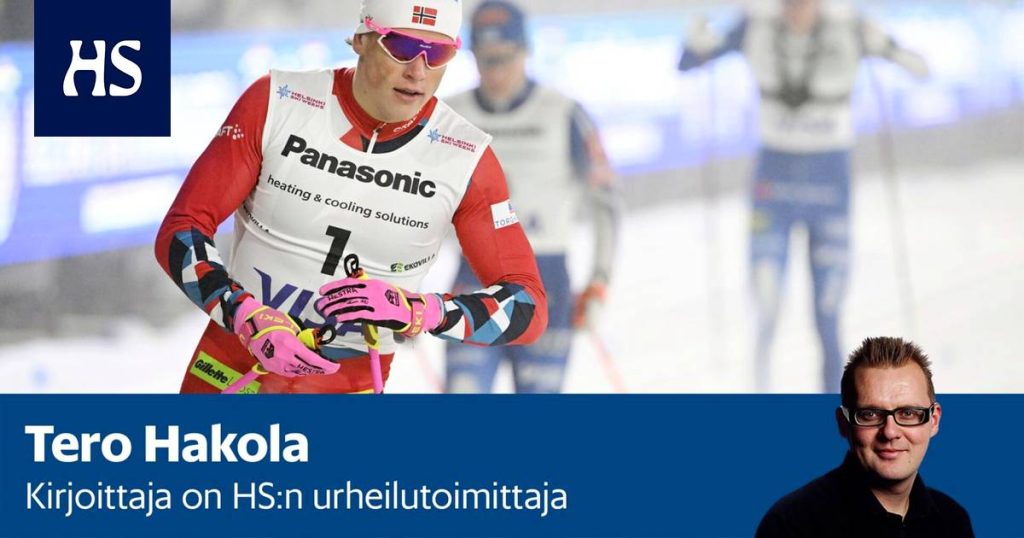
The sprint race of the Tallinn World Cup in environments like Laululava is the future of skiing. But the International Ski Federation should stay away from public votes, writes Tero Hakola, news producer of HS’s sports department.
Ski season the final climax offers a glimpse of what cross-country skiing could be in a few years.
In top skiing, we see more and more crashes, splinters and joint starts. It is also certain that several competitions will be organized in an urban environment in the middle of the city.
Raw endurance performance remains essential in a large part of top skiing. But the skilful ski handling and fast pace familiar from skicross are also emphasized.
The public then decides whether the direction of development is right.
Last week, the well-established Drammen World Cup sprint was contested. It is skied in the middle of a picturesque Norwegian town of 70,000 inhabitants.
There was no shortage of speed and dangerous situations on the circuit around the Bragernes church.
The World Cup sprint race held on Tuesday at Laululava in Tallinn was even more exciting.
There was one 25-meter climb with a height difference of 25 meters, a decent bend and a few other tight turns on the track of a good 500 meters.
The audience cheered right at the edge of the track and saw the skiers’ speed and compunctions throughout the race. After two laps, the finish line was located in front of the Laululava.
The singing stage is the birthplace of Estonia’s “Singing Revolution”. Since then, Metallica, Madonna and the Rolling Stones have performed there, among others.
And now the world’s top skiers.
It is certain that the Tallinn race will continue, if the Estonians have the will to organize it.
Bridge there will be Finnish versions next week.
On Wednesday was the Olympic Stadium sprint and on the weekend the Salpausselkä races, the latter of which is also suitable for the stadium skiing series.
On the sprint track that goes up to the Indian hill, the skiers are almost always in the eyes of the spectators. The track also has enough of the demandingness needed in top skiing.
Read more: The skiing nation rejected the stars at the Olympic Stadium

An estimated 5,000 spectators attended the sprint race at the Olympic Stadium. Picture: Heikki Saukkomaa / Newspaper photo
The Ski Federation organized the Olympic Stadium sprint for the second time. The train strike and bad weather put a dent in the ticket office, and there were an estimated 5,000 spectators.
The Olympic Stadium sprint is a fun race without official status. Still, even there there are things that the International Ski Federation can try in the World Cup in its reform frenzy, even if it doesn’t make sense.
One such is the public vote, on the basis of which one skier who qualified in the preliminaries was promoted to the semi-finals.
In the women’s race, the real lucky loser was Kerttu Niskanen, who won a second place with public votes. A young man made it to the men’s semi-finals Eero Rantala, who was eliminated in his first round due to a broken pole.
A fun experiment, but no further. Sacrificing the ultimate values of competitive sports for entertainment would be the road to destruction. Let the stopwatch tell the facts in the future as well.
On the other hand, it would not be a surprise if the joint lubrication of skis tested in Tallinn and Helsinki survives in some form.
Helsinki Ski Weeks and the stadium sprint are cross-country promotion events for the Finnish Ski Federation, and a smart one at that. Still, you have to file too.
If as many people as possible are wanted, tickets should cost 10–30 euros. There could also be more skiing and less entertainers.
The best time for the race would be during the capital region’s winter vacation on Saturday at 2 p.m., but the international competition calendar for elite skiing is a no-go here.
The Ski Federation can’t do anything about it.
The World Cup status would of course increase the public’s interest, but the Ski Association has a hard job to keep up with the current events in Ruka and Salpauselä.
But until Wednesday’s ski party.
Norwegian superstar Johannes Høsflot Klæbo know where the skier’s money comes from. He praised the event, thought he would come again and was certainly sincere in what he said.
Finland’s number one skier was also at the Olympic Stadium in the evening Jasmi Joensuu thanked his fans and sponsors. As it should be.
